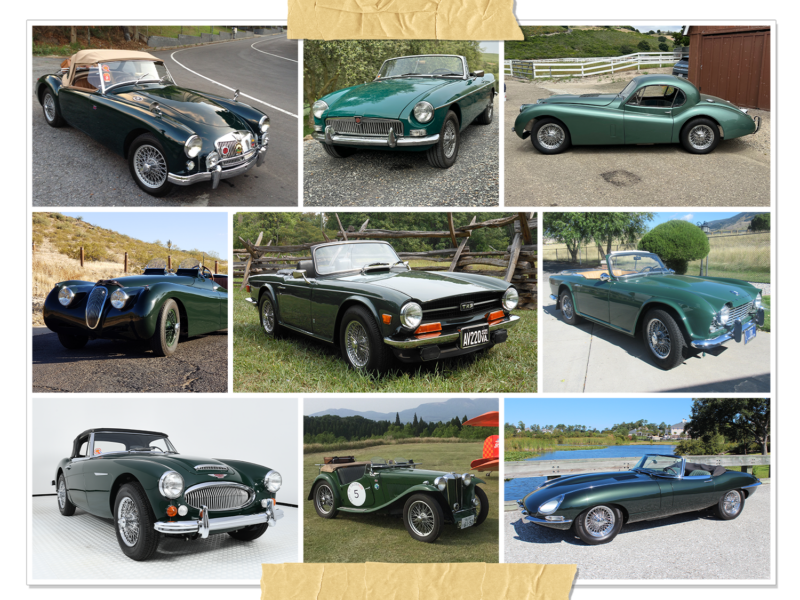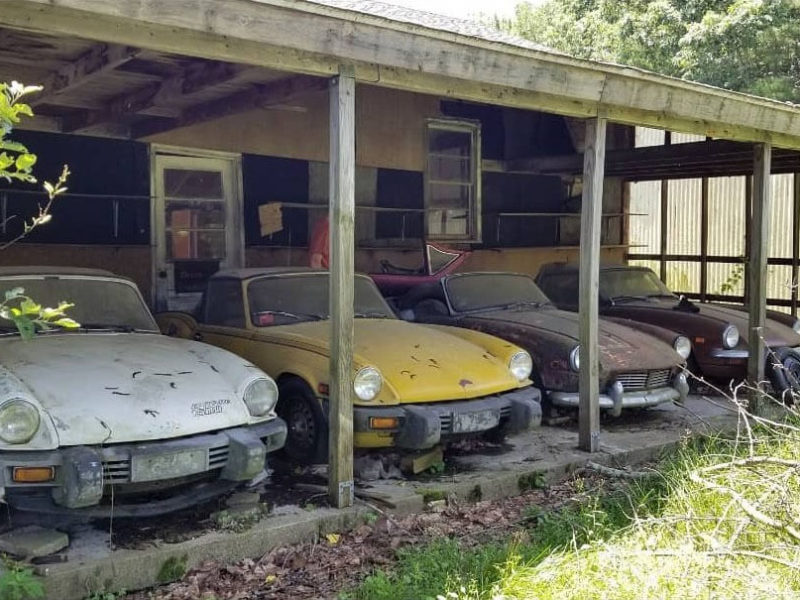To drive a sports car more than a few decades old demands skill in the very particular requirement of shifting gears. Almost by definition these cars have manual shift transmissions. Some are three-speeds, most are four and some may have a fifth in the form of an over-drive. Also by definition, most of them are cranky, irascible devils that test our patience and aptitude at every movement of the shifter. Some require finesse, almost the touch of a surgeon, to guide the lever from one narrow gate to another; others may require a strongman’s arm to jam the darn thing through the unseen blockade of mechanisms guarding one gear from another. Whatever the case, we have all had to come to some mastery of this skill to fully enjoy our cars.
For those of us, raised in the 50s and 60s, we cut our teeth on American V8s.
Tachometers were unknown to us at the time so we shifted gears according to the sound of the engine. When the clatter and roar reached a crescendo signaling imminent destruction, we shifted. The term we coined was, “floating the valves.” Foot to the floor, we held the gear until the poor engine could go no further in revs or power. In truth it was more like a convulsive gasp for life than anything as peaceful as floating. It was testimony to the ruggedness of those big engines that they held together; never turning into shrapnel. What they lacked in finesse, they made up for in brute force function.
For those of us who transitioned into European cars, shifting gears took us into a new dimension of skill, finesse and purpose. In American cars you shifted to go faster; in European cars you shifted to go faster as well, but then you also shifted to go slower. What a concept! Unless you were driving a Volkswagen or an early Porsche, where you could just kind of throw the lever in the general direction of the next gear, most of the Italian and English cars required a very determined action that was not always guaranteed when done in the moment of most need. Of course Ferrari is famous for its polished metal slotted gates that have little tolerance for the sloppy hand.

 The British, on the other hand, preferred to mystify the driver by hiding the fact that a loose downshift to 2nd brought you perilously close to the unseen unguarded entry into reverse—correction: not into reverse, but into the whirling dervish that is reverse, spinning at high speed in the opposite direction from what you want. Find an old British car that does not have the inharmonious sound of metal chips singing in its transmission and you will have a car that has not been driven to its potential. For you the new buyer that may be good. But, that state of transmission virginity will not remain for long after the car has been really driven for a while.
The British, on the other hand, preferred to mystify the driver by hiding the fact that a loose downshift to 2nd brought you perilously close to the unseen unguarded entry into reverse—correction: not into reverse, but into the whirling dervish that is reverse, spinning at high speed in the opposite direction from what you want. Find an old British car that does not have the inharmonious sound of metal chips singing in its transmission and you will have a car that has not been driven to its potential. For you the new buyer that may be good. But, that state of transmission virginity will not remain for long after the car has been really driven for a while.
The Game-Changer
The downshift is the action that makes the accomplished driver earn his or her stripes. It is somewhat of a lost art because most people today, younger than around fifty, have learned and done most of their driving with auto transmissions. The good thing is that proper shifting and downshifting are one of the few applications of technical skills in which our children will not likely surpass us.

 Picture this scene: you’re coming down hot into a sharp corner, faster than the corner can be taken, the ball of your right foot toes are jammed hard onto the brake pedal (the car is slowing but not fast enough), your heel is arched over the space between the brake and gas pedal, your left foot is pumping the clutch down once to pull the shift lever out of the higher gear while at that precise moment your right heel is hitting the gas applying a determined amount of pressure to raise the revs of the engine to the proper level to meet the spin of the lower gear. This is happening at the precise time that the shift lever is being pulled through neutral, then the clutch is depressed a second time (called double-clutching—for you readers under 30) the engine revs are up and the shifter is pulled through to the lower gear. The clutch is let out, the gear is engaged, the engine torque adds a surge of drag power to the overworked brakes and with heart pumping and hands flying, the car is around the turn in what a spectator views as a routine effortless maneuver. All of these events took place in about a second of time and the success of these maneuvers possibly saved the car from sailing off the road into mayhem. Many a famed race driver has sent a car hurtling off the track after “missing a shift.”
Picture this scene: you’re coming down hot into a sharp corner, faster than the corner can be taken, the ball of your right foot toes are jammed hard onto the brake pedal (the car is slowing but not fast enough), your heel is arched over the space between the brake and gas pedal, your left foot is pumping the clutch down once to pull the shift lever out of the higher gear while at that precise moment your right heel is hitting the gas applying a determined amount of pressure to raise the revs of the engine to the proper level to meet the spin of the lower gear. This is happening at the precise time that the shift lever is being pulled through neutral, then the clutch is depressed a second time (called double-clutching—for you readers under 30) the engine revs are up and the shifter is pulled through to the lower gear. The clutch is let out, the gear is engaged, the engine torque adds a surge of drag power to the overworked brakes and with heart pumping and hands flying, the car is around the turn in what a spectator views as a routine effortless maneuver. All of these events took place in about a second of time and the success of these maneuvers possibly saved the car from sailing off the road into mayhem. Many a famed race driver has sent a car hurtling off the track after “missing a shift.”
The really nice thing about all of this is that we, the average Joe driver of these classic cars, experience all of the exhilaration of accomplishing these skills, granted under less peril (most of the time) as the race drivers who have perfected them. A missed shift may not send us off the road, but the grind of the gears in protest to our sloppiness will sure let us know that we still have a thing or two to learn from these grand old cars.
It is hard to define exactly what qualifies a car to be called classic, vintage or exotic, but the common element is that they all perform their function as intended, have been saved over time, preserved or restored, and they are being driven today—to the delight of all our senses and wits—as they were intended.
By Tom O’Neill









'Shifting Gears' has 1 comment
January 20, 2014 @ 8:43 pm Dale Phillips
The shifting gears story was right on regarding the heel and toe downshift technique. It’s something that every driver should learn to do smoothly. However, you simply do not need to double clutch a synchromesh transmission if you learn to hit the proper rpm for the lower gear while the clutch is disengaged. Disengage the clutch, rev to the proper rpm while downshifting and reengage the clutch is all you need. It’s fast and clean.
The story is accurate for a non synchromesh tranny. In fact, for a non synchro tranny it may be of benefit to double clutch on both up and down shift.
I would also note that taking extra bit of time to double clutch while going into a curve too fast with bad brakes will likely land you in the ditch.